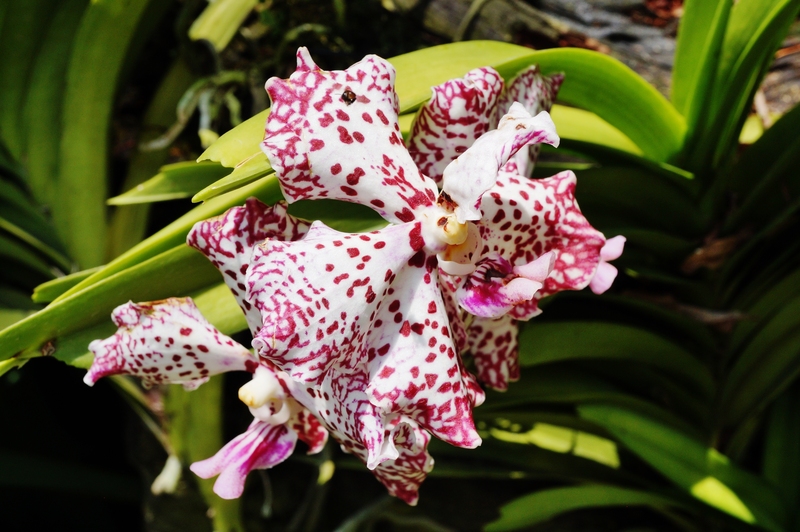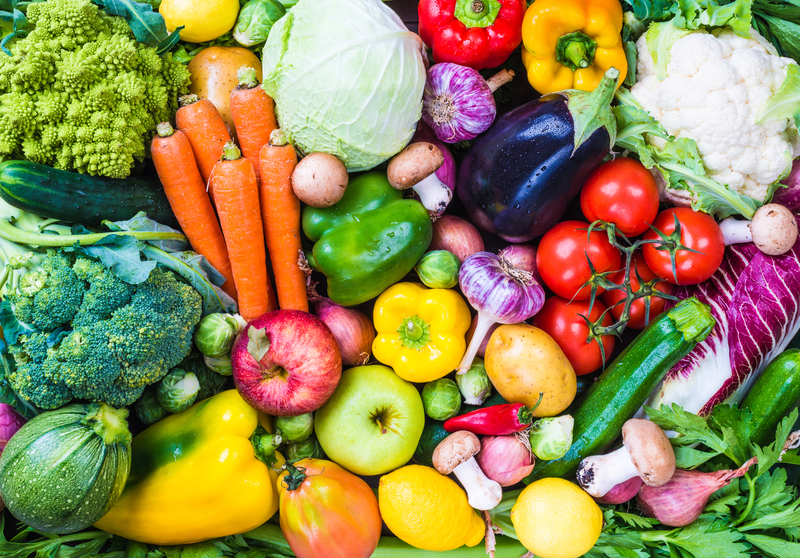Pet-Friendly Planting Strategies for Dog Owners
Posted on 10/06/2025
Pet-Friendly Planting Strategies for Dog Owners
Dog parents know that their furry companions are more than just pets--they're family. As cherished members of the household, dogs often share the outdoor spaces where we relax, entertain, and enjoy nature. However, creating a lush, green oasis can pose challenges for dog owners. Common landscaping plants and practices may threaten your pet's health and safety. Thankfully, designing a pet-friendly garden is possible and rewarding! This comprehensive guide explores dog-friendly planting strategies, helping you create a beautiful, safe outdoor haven for your canine companions.

Why Pet-Friendly Landscaping Matters
Many popular garden plants are toxic to dogs if consumed. Even lovely ornamentals like azaleas, lilies, and sago palms can cause severe reactions. Meanwhile, sharp thorns, spiky foliage, and toxic mulches threaten your dog's comfort and safety. A well-planned pet-safe landscape not only supports your garden's aesthetic but also encourages healthy, joyful playtime for your dog. By prioritizing pet-friendly plant choices and landscape design, you protect your beloved dog while still enjoying a stunning yard.
Understanding Your Dog's Outdoor Behavior
Before you begin choosing plants and planning your outdoor space, it's crucial to observe how your dog interacts with the yard. Key factors to consider:
- Digging: Some breeds and individual dogs love to dig, which can uproot delicate flowers and damage garden beds.
- Urination Patterns: Dog urine can burn grass and sensitive plants, especially when dogs frequently return to the same spot.
- Chewing: Curious dogs often nibble on foliage or stems. Choosing nontoxic plants for dogs is essential.
- Running Paths: Dogs often forge their own trails during play or patrol. Durable pathways help redirect traffic and save plant beds from trampling.
When you design with these behaviors in mind, you'll ensure that your garden survives a dog's daily activities while remaining a vibrant, enjoyable space.
Essential Pet-Safe Plant Selection Tips
1. Identify Toxic Plants and Avoid Them
The ASPCA's extensive plant database is a valuable resource for pet parents. Never assume a plant is harmless! Common dog-toxic plants include:
- Oleander
- Azalea and Rhododendron
- Sago Palm
- Lily of the Valley
- Foxglove
- Yew
- Autumn Crocus
2. Select Hardy, Non-Toxic Plants
Choose dog-safe plants that can withstand roughhousing and occasional nibbling. Ideal options include:
- Camellia: Non-toxic and produces colorful blooms.
- Magnolia Bushes: Sturdy with beautiful flowers.
- Snapdragons: Bright, fun, and safe for pets.
- Sunflowers: Tall and resilient, with nontoxic seeds (in moderation).
- Marigolds (Tagetes): Tough, colorful, and safe for most dogs.
- Ferns (Boston or Sword): Add lush, non-toxic greenery.
- Pansies and Petunias: Annual favorites that are safe for canines.
- Bamboo: Fast-growing, non-toxic, and provides screening.
3. Create Natural Barriers
To protect delicate garden beds or new plantings, use dog-friendly shrubs and thick groundcovers to form natural barriers. Robust hedges such as boxwood, viburnum, or wax myrtle discourage digging and trampling without posing risks to your dog.
4. Choose Soft, Safe Groundcovers
Traditional mulch, like cocoa mulch, is toxic to dogs if ingested. Instead, opt for:
- Cedar or Pine Bark Mulch: Less likely to cause harm if accidentally ingested.
- Pea Gravel or Smooth Stones: Provide drainage and discourage digging.
- Pet-Friendly Groundcovers: Creeping thyme, clover, or Irish moss offer cushiony, safe surfaces for dogs to relax on.
5. Diversify with Edible Plants
Integrating dog-friendly edible plants like blueberries, carrots, and rosemary into your landscape can be rewarding for both you and your pet. However, never assume all vegetables, flowers, or herbs are safe--some, such as onions and garlic, are dangerous for dogs!
Planning a Dog-Proof Landscape Design
Effective pet-friendly yard design requires thoughtful layout and plant placement. Here are some strategies to ensure a harmonious and low-stress outdoor environment for both you and your four-legged friend:
Designate Dog-Specific Zones
- Potty Area: A gravel- or mulch-covered dog toilet spot makes cleanup easy and keeps other lawn areas pristine.
- Shady Resting Spots: Plant trees or install dog houses where your pet can cool off during hot weather.
- Active Play Spaces: Leave roomy, open lawns for running and fetch. Durable grasses like Bermuda or zoysia are best for high traffic.
- Digging Pit: Provide a dedicated digging area filled with sand or loose soil to redirect destructive digging behavior.
Install Secure Borders and Fencing
Safe fencing prevents adventurous dogs from escaping and keeps them away from dangerous plants. Choose materials and heights appropriate for your breed. Consider buried fencing or root barriers to minimize tunnel escapes and protect sensitive plant roots.
Incorporate Pathways
Dogs enjoy patrolling their territory. Curved stone, gravel, or mulch paths can guide your pup away from delicate flowerbeds and through the garden's most resilient areas.
Use Raised Beds
Planting flowers and vegetables in raised beds helps protect them from digging, trampling, and urination. Unfinished wood or stone are ideal materials--avoid pressure-treated lumber, which may contain harmful chemicals.
Opt for Drip Irrigation
Traditional sprinklers can attract playful dogs and muddy up your lawn. Drip irrigation systems keep soil evenly moist and use less water, creating fewer temptations and messes for your furry friend.
Maintenance and Safety Tips for Pet-Friendly Gardens
Once established, your dog-safe garden requires consistent maintenance to prevent hazards and keep it thriving. Essential tips include:
- Inspect the yard regularly for sharp objects, tools, or poisonous mushrooms that could harm your pet.
- Immediately remove wilted or dropped plant debris which may become toxic as it breaks down.
- Avoid lawn and garden chemicals. Fertilizers, pesticides, and herbicides can poison pets. If you must use them, choose pet-safe alternatives and keep dogs away until treated areas are completely dry and aired out.
- Monitor seasonal dangers. In spring and fall, pay extra attention to bulbs, mushrooms, and decomposing material.
- Provide fresh water outside year-round so your dog doesn't resort to drinking from ponds or puddles, which may contain algae or parasites.
Best Dog-Friendly Plants for Your Garden
- Roses (thornless varieties): Beautiful and safe, especially types bred without thorns.
- Bee Balm (Monarda): Vibrant flowers, non-toxic, and attract pollinators.
- Spider Plant (Chlorophytum comosum): Hardy for borders, also suitable for houseplants.
- Fuchsia: Brilliant blooms and pet-safe.
- Ornamental Grasses: Such as blue fescue or feather reed grass provide texture and tolerate dog activity.
- Coral Bells (Heuchera): Shade-friendly and resilient to traffic.
- Many Herbs: Sage, thyme, basil, and cilantro are safe culinary additions for humans and pets alike.
Plants and Materials to Absolutely Avoid
- Cocoa Mulch: Contains theobromine, deadly to dogs, just like chocolate.
- Pesticide-laden Mulches and Soils: Only use organic, untreated products.
- Boneset, Castor Bean, and Jimson Weed: Extremely dangerous if ingested.
- Sharp Rocks and Thorns: Can injure paws and skin.
Pro Tip: Even so-called "non-toxic" plants can cause mild digestive irritation if ingested, so discourage all plant-eating behaviors whenever possible.
Landscaping Ideas to Enhance Your Pet-Safe Yard
- Dog Pools and Splash Areas: Shallow, easy-to-clean pools provide enrichment and exercise.
- Agility Equipment: Add tunnels, hurdles, and ramps for extra stimulation.
- Clean, Comfy Shade: Large trees or attractive pergolas keep both you and your dog cool on sunny days.
- Natural Odor Control: Plant herbs like rosemary and lavender near seating to help mask doggy scents. Both are generally safe for dogs when grown outdoors.

Frequently Asked Questions: Pet-Friendly Gardening for Dog Owners
1. How Can I Prevent My Dog from Digging Up Plants?
- Create a dedicated digging spot and reward your dog for using it.
- Install physical barriers (such as chicken wire) under mulch to deter digging in other areas.
- Choose mature, established plants rather than tender seedlings.
2. Will Dog Urine Kill My Grass?
- Yes, concentrated urine causes "burn spots" on most lawns. Dilute with water after your dog goes or train your pet to use a designated potty area.
- Try planting clover, ryegrass, or fescue, which are more urine-resistant than typical Kentucky bluegrass.
3. Are There Any Landscape Features Unsafe for Dogs?
- Yes. Avoid open compost bins, toxic mulch, thorny plants, and small water features that present a drowning risk. Always ensure fencing is secure and gates close properly.
4. How Do I Handle Dog Waste in the Yard?
- Scoop waste daily and dispose of it properly.
- Train your dog to use one spot and consider installing a pet waste composter designed for dog droppings, separate from any food-growing beds.
Conclusion: Create a Safe, Dog-Friendly Garden Paradise
Building a dog-friendly landscape means more than just picking non-toxic plants for dogs. It's about understanding your pet's habits, choosing resilient and hardy greenery, and planning yard features to ensure fun and relaxation for both you and your furry companion. By following these pet-safe gardening strategies, dog owners can enjoy lush, low-maintenance yards that put safety and enjoyment first.
With a bit of research and creative design, you'll cultivate a garden that thrives under loving paws--and rewards every member of your family!



